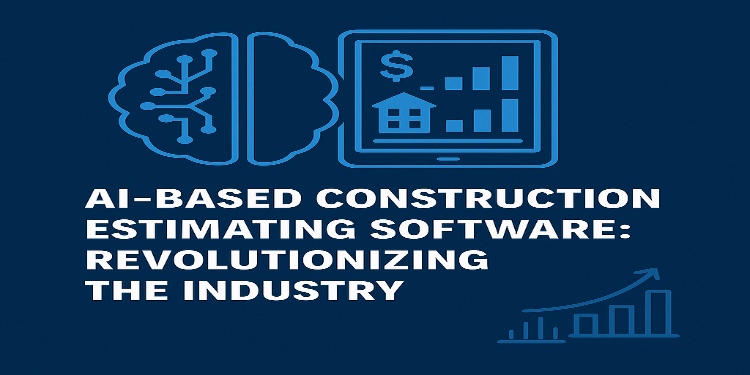The construction industry, often criticized for being slow to adopt new technologies, is currently undergoing a significant transformation. Central to this change is the rise of artificial intelligence (AI)-based construction estimating software, which promises to revolutionize how construction projects are planned, budgeted, and executed. This technology not only streamlines the estimating process but also reduces errors, increases accuracy, and offers a more efficient path to project completion.
What is AI-Based Construction Estimating Software?
AI-driven construction estimating software leverages machine learning (ML), deep learning, and natural language processing (NLP) to improve and automate the process of estimating costs for construction projects. Traditionally, estimating construction costs has been a labor-intensive task that involves reviewing detailed drawings, materials lists, and labor requirements. This process is prone to human error and can be time-consuming, often resulting in project delays or cost overruns.
AI-based estimating software, on the other hand, automates these tasks by analyzing vast amounts of historical data, current market conditions, and project-specific variables. The software is capable of producing highly accurate estimates based on real-time data, reducing reliance on manual inputs and mitigating the risk of human error.
Key Features and Benefits of AI-Based Estimating Software
Enhanced Accuracy and Speed
One of the most significant advantages of AI-based construction estimating software is its ability to generate precise cost estimates much faster than manual methods. By automating the process, AI can analyze data at a much higher speed, ensuring that project managers receive timely and accurate estimates. This can be particularly beneficial in competitive bidding situations, where timely submission of bids can make the difference between winning and losing a contract.
Real-Time Data Integration
AI-based estimating software integrates with other project management tools to pull in real-time data about materials, labor costs, and market conditions. This means estimates are continuously updated to reflect changes in costs or availability, ensuring that the most current information is always factored into the calculations. This real-time capability can help project managers make informed decisions quickly and adjust to market fluctuations without being caught off guard by unexpected price increases.
Cost Prediction and Risk Analysis
Advanced AI algorithms can predict potential cost overruns by analyzing historical data from similar projects. The software can identify patterns that might not be immediately obvious to human estimators, helping construction firms better anticipate potential challenges and risks. By understanding these risks early in the process, firms can implement mitigation strategies to prevent costly delays or unexpected expenditures.
Accurate Material Takeoffs
Material takeoffs, which involve estimating the quantities of materials required for a project, can be an especially challenging task. AI-powered software can automatically extract quantities and measurements directly from project plans and blueprints. This reduces the time and effort spent on manual takeoffs and minimizes the risk of errors that could lead to material shortages or excess inventory.
Improved Collaboration and Communication
AI-based estimating tools can be integrated into broader project management software, facilitating better collaboration between project managers, contractors, and subcontractors. These tools help ensure everyone involved in the project is working from the same set of accurate, up-to-date data. This improved communication can lead to fewer misunderstandings, reduced change orders, and a more streamlined project delivery process.
Machine Learning for Continuous Improvement
One of the most powerful aspects of AI-based construction estimating software is its ability to learn and improve over time. Through machine learning, the software can analyze past projects to understand which estimating approaches produced the best results. This continuous learning process allows the software to refine its models and make even more accurate predictions as more data becomes available. Over time, this feedback loop results in progressively better estimates and cost predictions.
Use Cases of AI-Based Estimating Software
Pre-Construction Phase
During the pre-construction phase, AI estimating software can assist with creating initial cost projections and helping stakeholders understand the feasibility of a project. By leveraging historical data and market trends, AI software can forecast potential costs with a high degree of accuracy, enabling better decision-making and budgeting.
Change Order Management
Change orders are an inevitable part of construction projects, but they often lead to disputes or delays when they result in unexpected costs. AI-based estimating software helps manage change orders by providing up-to-date cost projections and quickly calculating the impact of any changes to the project scope, materials, or labor requirements. This ensures that project managers can assess the financial implications of changes immediately and prevent cost overruns.
Bidding and Tendering Process
AI software can enhance the bidding and tendering process by helping construction firms generate competitive bids based on accurate, data-driven cost estimates. By considering various factors such as material prices, labor rates, and subcontractor availability, the software can produce highly detailed and competitive bids in a fraction of the time it would take to generate estimates manually.
Ongoing Project Monitoring and Adjustments
Once construction begins, AI-based software continues to track project progress, comparing actual expenses with the initial estimates. By doing so, it provides real-time insights into any variances between planned and actual costs. This enables project managers to make adjustments quickly and prevent budget overruns.
Challenges and Considerations
While AI-based construction estimating software offers tremendous benefits, it is not without its challenges. Implementing such software requires an investment in training, as construction professionals must learn to work with new technology. Additionally, while AI can greatly reduce human error, it still requires oversight from experienced estimators to ensure that the software’s predictions align with the project’s specific needs.
Another consideration is data quality. AI software relies heavily on historical data to make accurate predictions. Inaccurate or incomplete data could lead to flawed estimates, making it essential for companies to maintain high-quality datasets. Additionally, integrating AI-based software with existing construction management tools may require some technical adjustments or support from IT teams.
The Future of AI in Construction Estimating
As AI technology continues to advance, the capabilities of construction estimating software will only improve. Future versions of the software could incorporate even more sophisticated machine learning algorithms, leading to more precise predictions and enhanced risk management features. Integration with other emerging technologies, such as augmented reality (AR) and virtual reality (VR), could further enhance the estimating process by allowing estimators to visualize projects in 3D and simulate different construction scenarios.
In conclusion, AI-based construction estimating software represents a major step forward in the construction industry. By improving the accuracy, efficiency, and speed of cost estimations, AI is helping construction firms stay competitive, reduce risks, and deliver projects on time and within budget. As the industry continues to embrace these innovations, AI will undoubtedly play an increasingly central role in shaping the future of construction project management.











































































